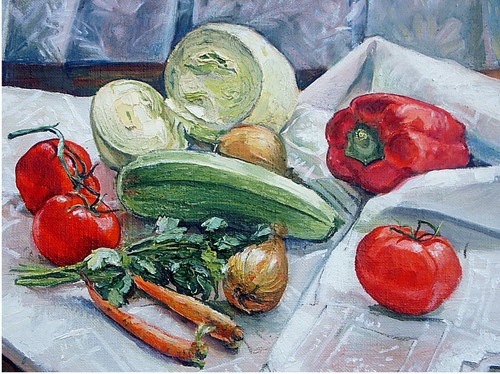You will need
- - watercolor paper;
- pencil, eraser;
- - watercolor paints and a round brush medium diameter.
Instruction
1
Before you begin drawing you should look for the vegetable that you want to portray. What shape is that? If the form is complex, then define a simple form in which it can fit. For example, radishes fit into a circle or oval – draw the geometric shapes on paper.Referring to the form of nature, give the circle a more natural form – the irregularities, the extension of the top of the root, narrowing at the tail. Pririsuyte long curved tail and leaves foliage. The leaves can be drawn on the basis of curved tongues ellipses, and triangles, which need to make wavy contours, and the center of the leaves to represent veins thick.
2
Beetroot is drawn in a manner similar to that described above. However, beets larger than a radish and is often more irregular or complex shape. For example, some of its roots can resemble a heart.
3
To draw the bow, to resort again to the help of a circle or oval. Then adjust this form, pririsoval wider side at the bottom of the bulb. Add on top line gear base where growing green shoots of the onion and connect it to a smooth line with a circle-base.Draw yourself long shoots per'evidnye figures. Bottom at the base of the bulb to draw a small strings-the roots. On the bottle, apply thin strokes, simulating the texture of its surface.
4
For carrot draw an elongated ellipse. One end slightly expand, and the second is narrow and pririsuyte to him, thin tail. To the wide end, place the cut tops in the form of a trapezoid with a zigzag line of the base. Short triple or double strokes draw a little "hairy" surface carrots.
5
Cabbage, although has a rounded shape, the most difficult to implement, especially if its leaves are not gathered into a tight head. Indicate on the paper the circle is the basis for the image of cabbage. At the top of the head, draw a smaller circle is a outlet, formed by the tops of the folded inner leaves.Divide the basic circle curves into several parts, depicting the layers of the outer leaves. Draw how they are wrapped on the outside. The edges of the leaves a wavy (scalloped).
6
Vegetables to paint better watercolors, using a clean basic color of the vegetable and dimming it in the shadows. For the formation of glare just leave untouched white paper. For foliage, use several shades of green that the picture was realistic and picturesque.
Note
To the watercolor turned out fresh, do not press heavily on the pencil when drawing and try to do without using an eraser.
